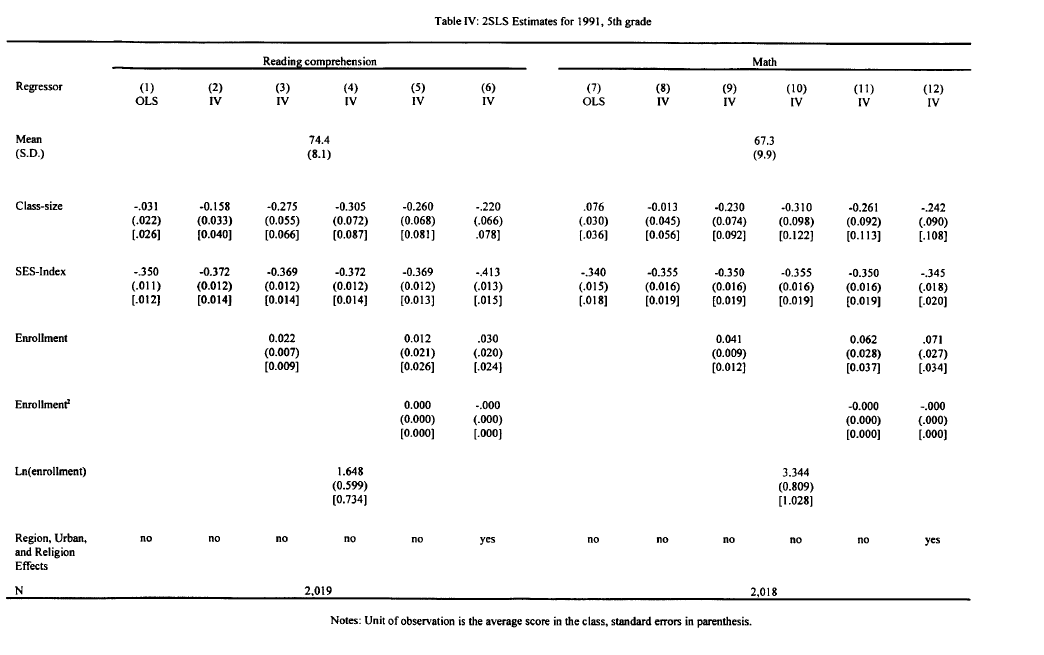Using Maimonides' Rule to Estimate the Effect of Class Size on Scholastic Achievement
Using Maimonides' Rule to Estimate the Effect of Class Size on Scholastic Achievement
Author: Joshua D. Angrist
Author: Victor Lavy
Abstract: The twelfth century rabbinic scholar Maimonides proposed a maximum class size of 40. This same maximum induces a nonlinear and nonmonotonic relationship between grade enrollment and class size in Israeli public schools today. Maimonides' rule of 40 is used here to construct instrumental variables estimates of effects of class size on test scores. The resulting identification strategy can be viewed as an application of Donald Campbell's regression-discontinuity design to the class-size question. The estimates show that reducing class size induces a significant and substantial increase in test scores for fourth and fifth graders, although not for third graders.
Date: 1999-05-01
URL: https://doi.org/10.1162/003355399556061
Volume: 114
Pages: 533-575
Publication: The Quarterly Journal of Economics
Issue: 2
Reading Notes:
Objective: To use Maimonides' rule, which has been interpreted as meaning a maximum of 40 children to a classroom, to measure the effect of class size on Israeli students
Background: Maimonides' rule means there will be discontinuities in the class sizes in Israel between a 39 person class and two 20 person classes with an addition of one student
Data & Key Variables:
Test scores of Israeli 3rd, 4th, and 5th graders in 1991 and 1992
Maimonides' rule: # students in classrom <=40
Methodology: Regression discontinuity
Results: Using the 40 student threshold as an instrument for class size, there is a negative effect of class size on test scores
Key Table/Figure:

